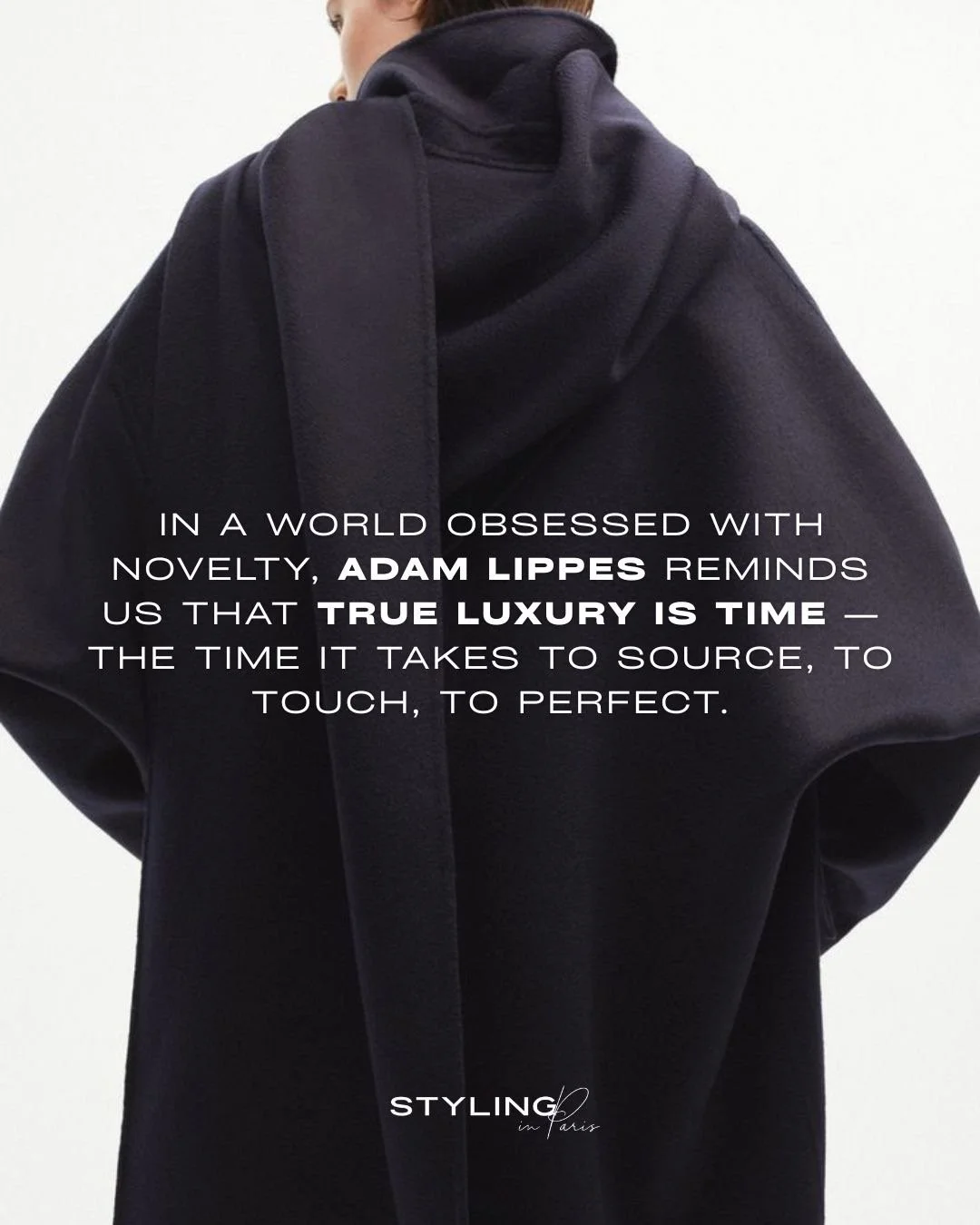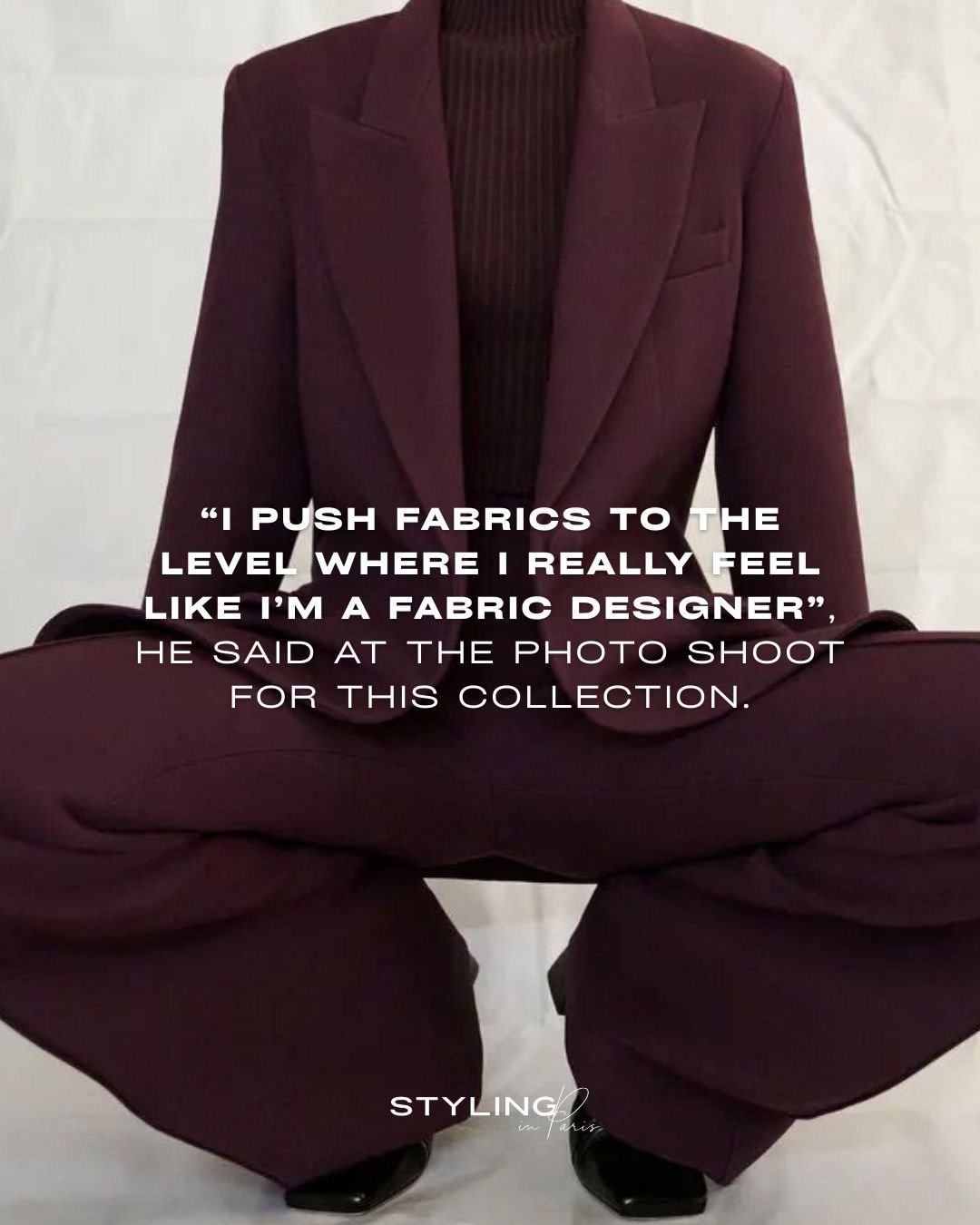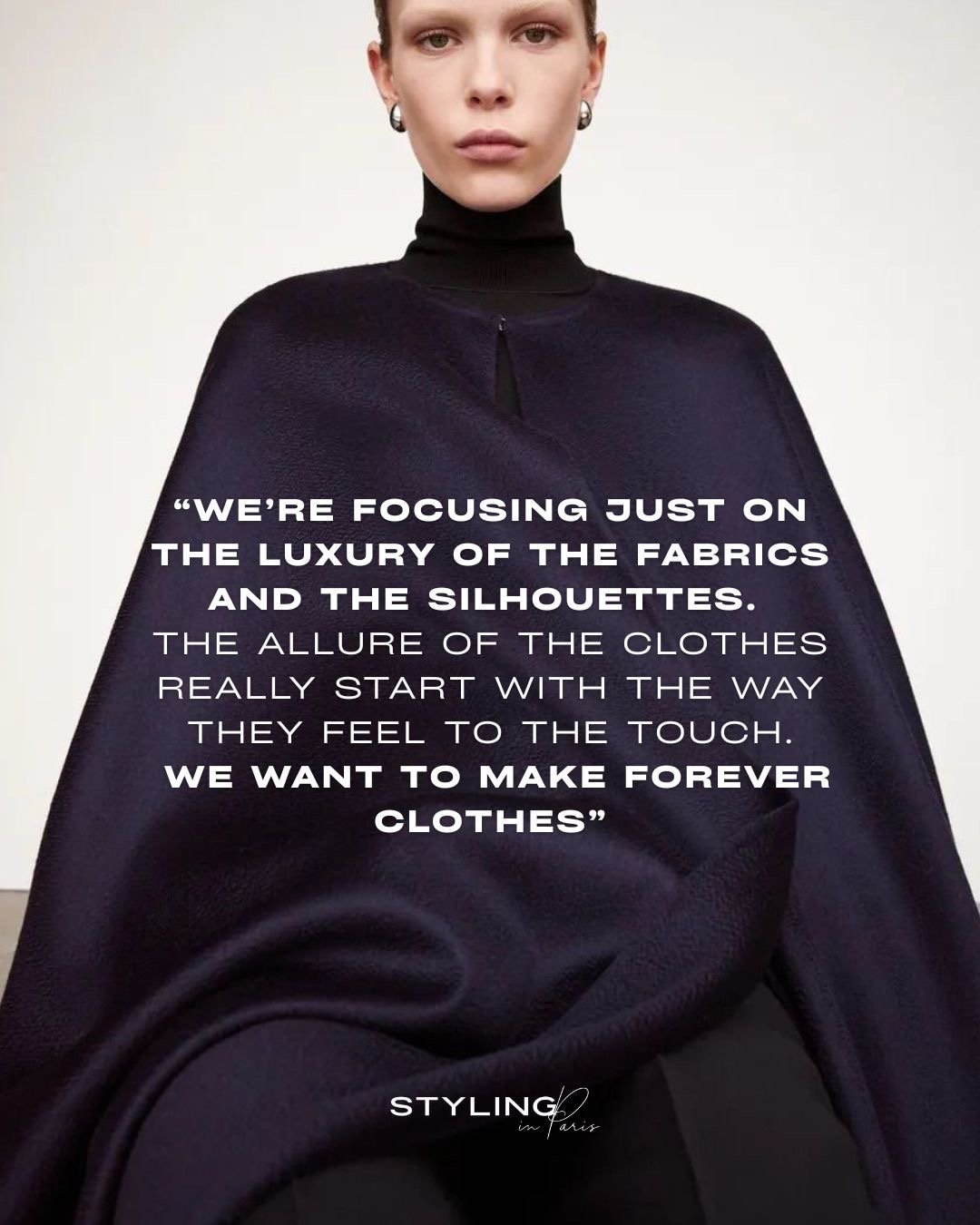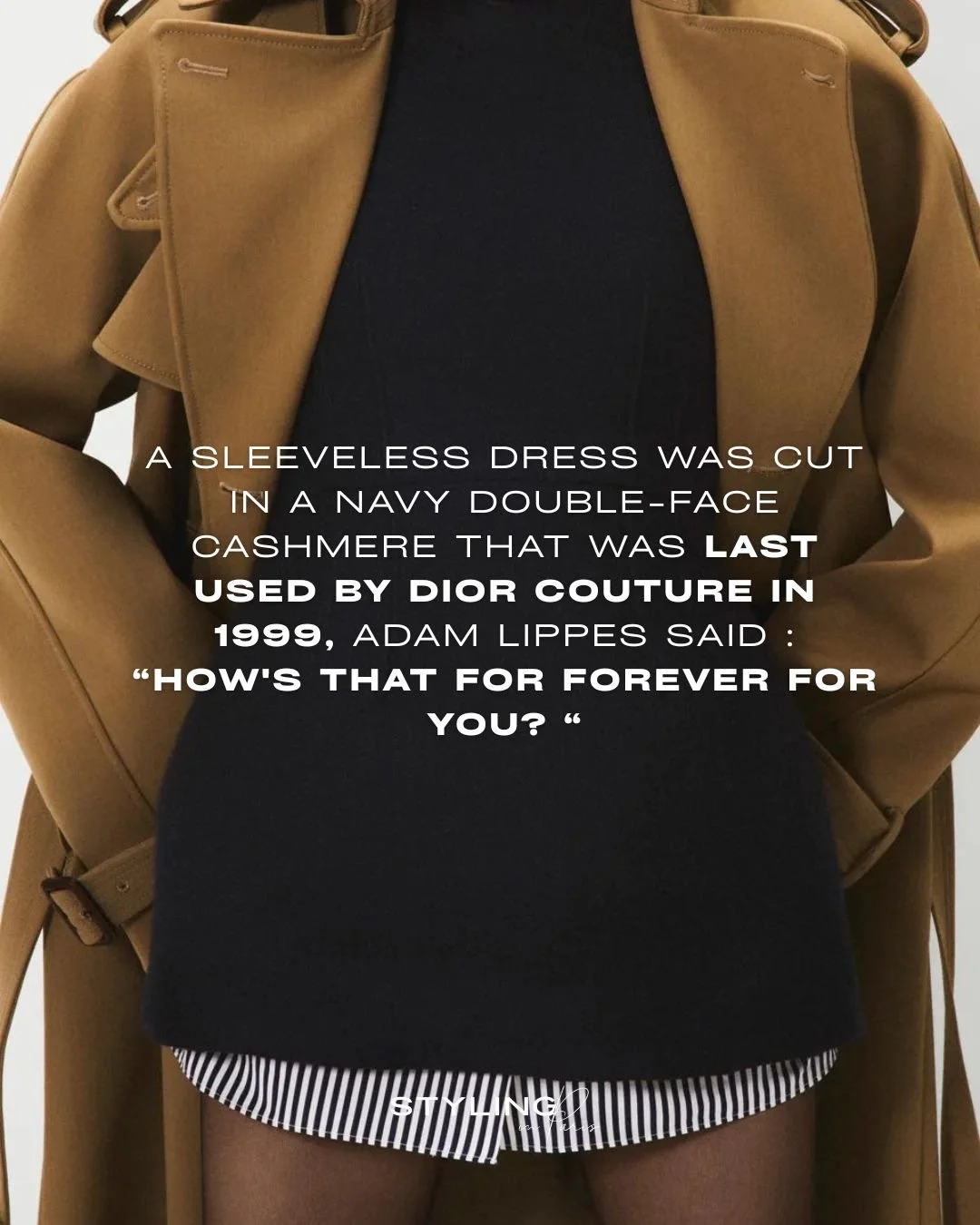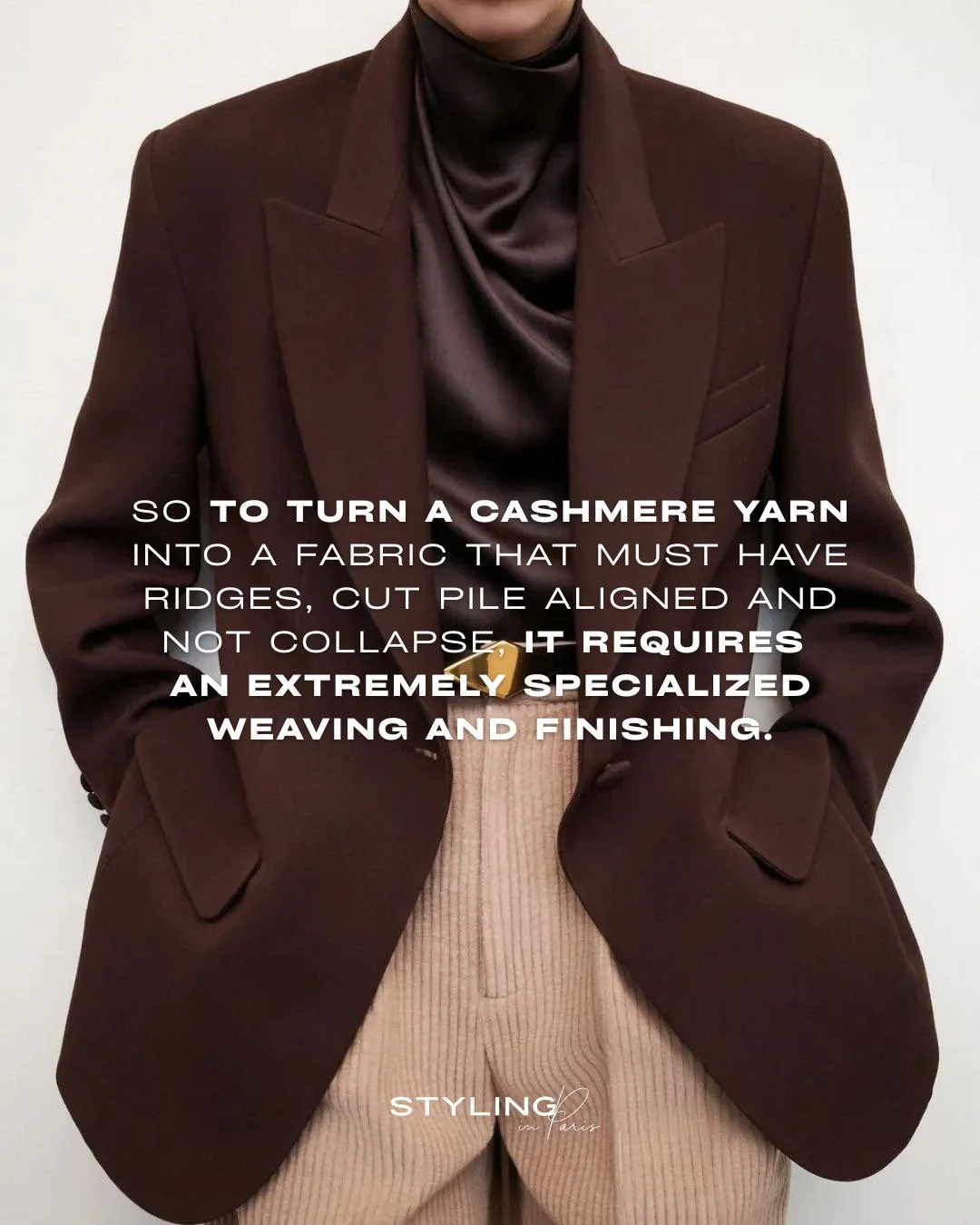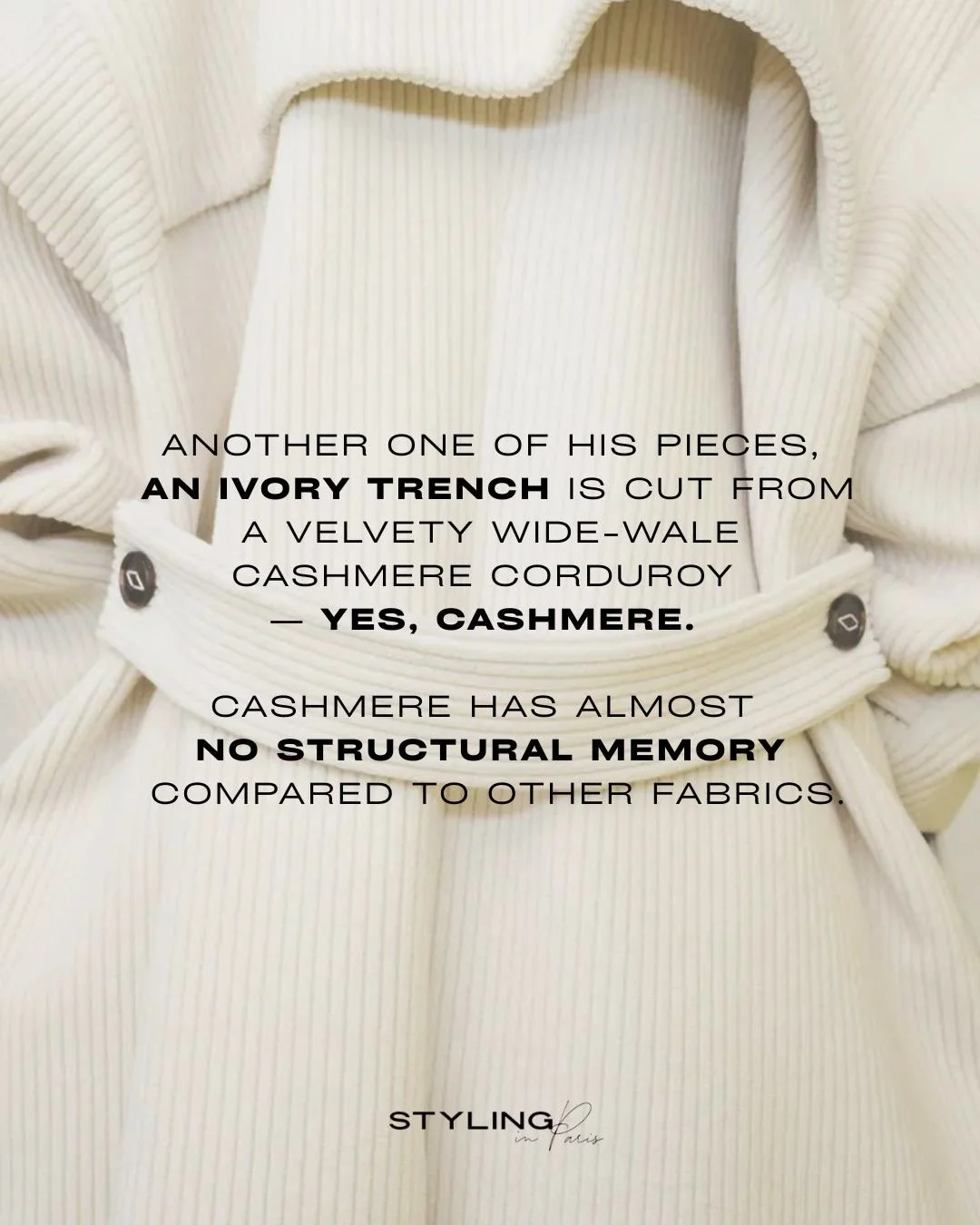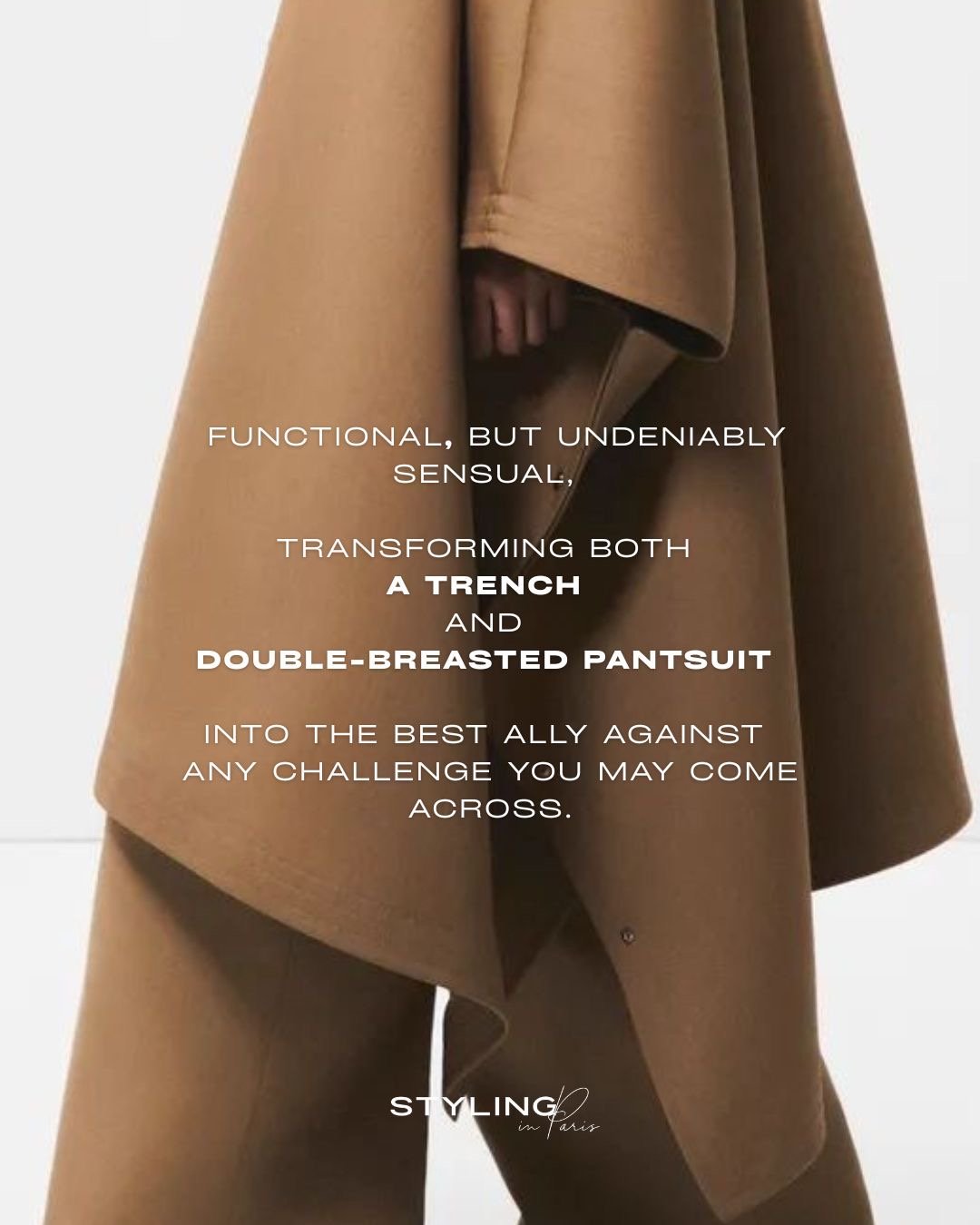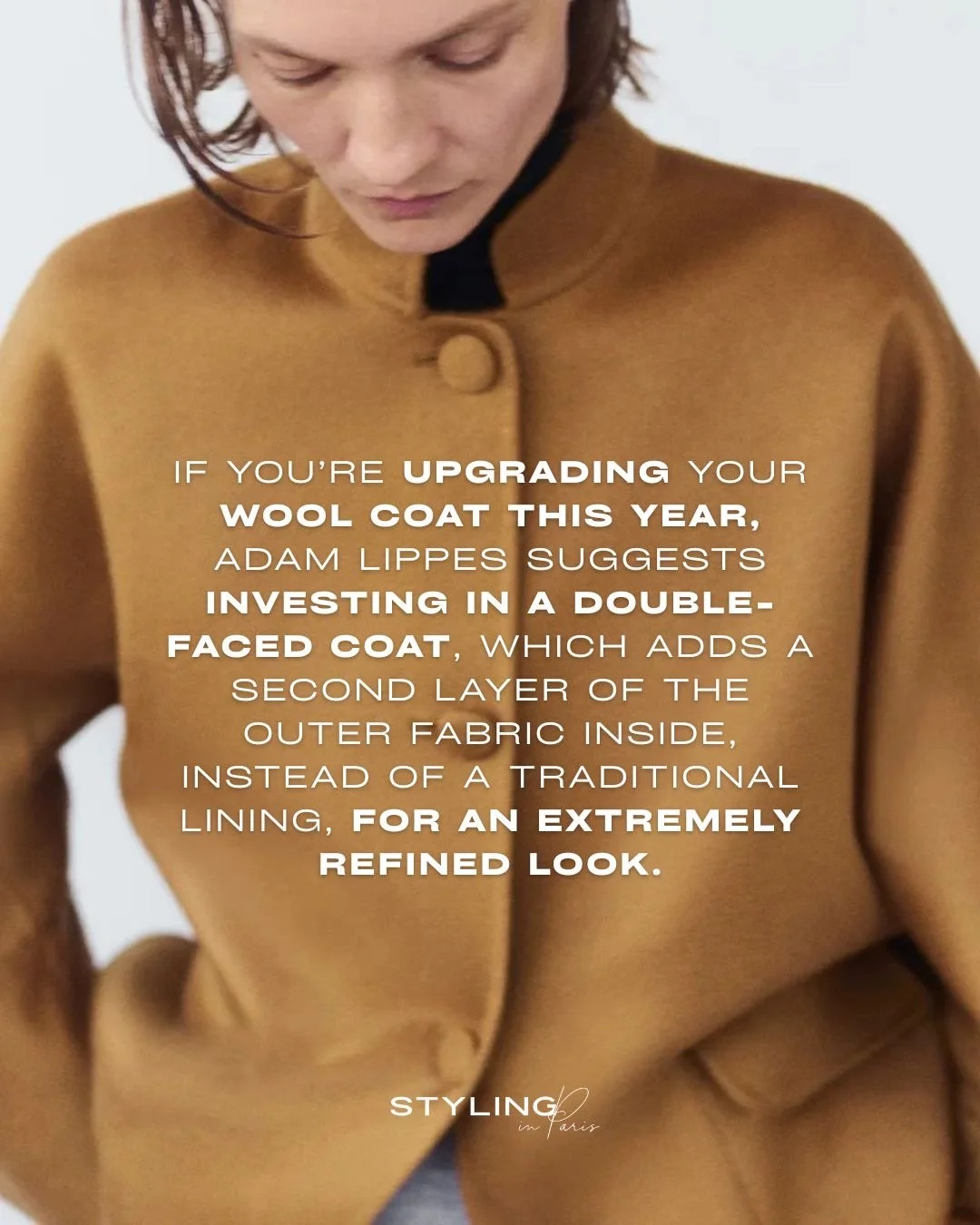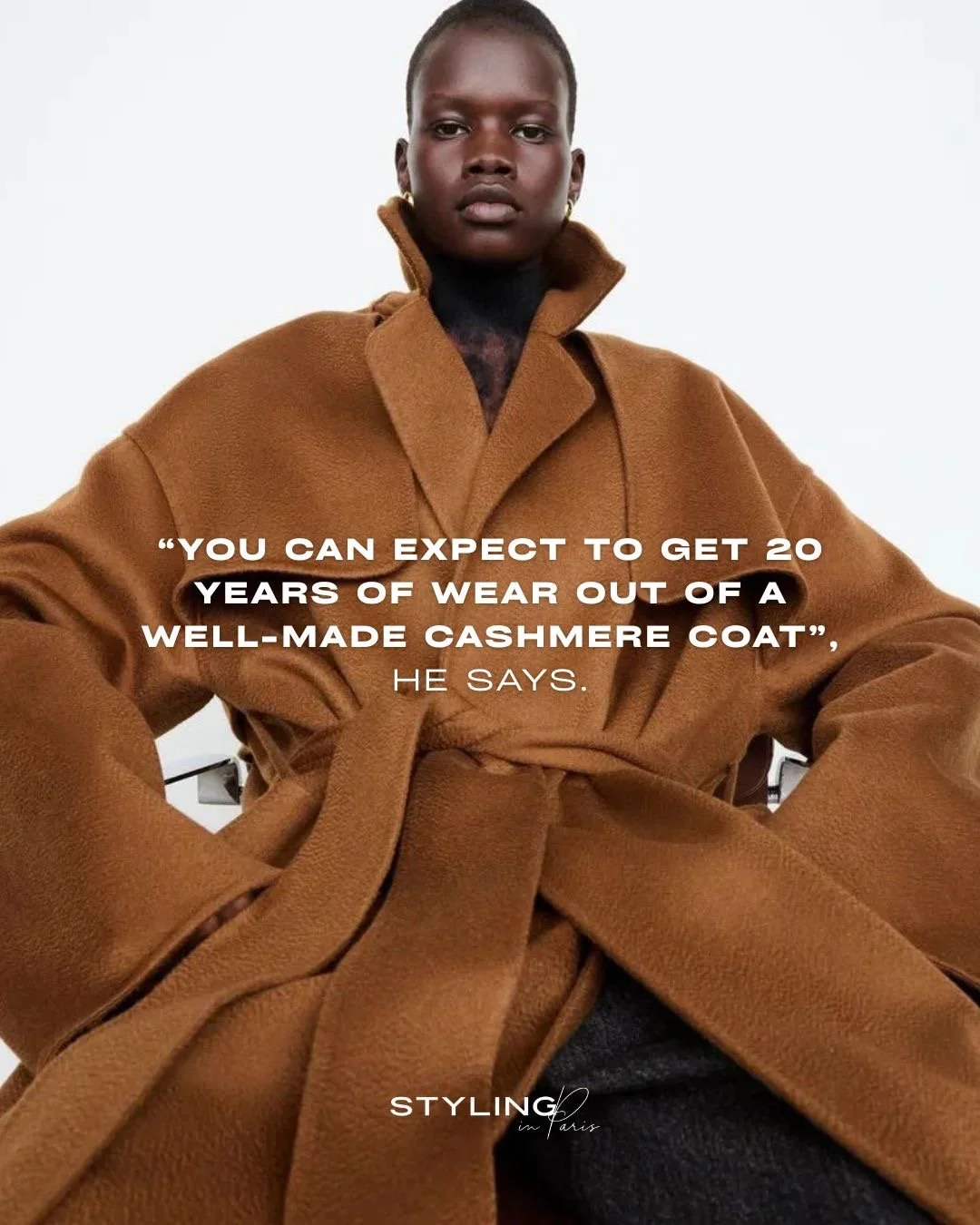The Fabric of Refinement: Inside Adam Lippes’s World
For Adam Lippes, luxury begins with touch.
One of his pieces — an ivory trench — is cut from a velvety wide-wale cashmere corduroy. Yes, cashmere corduroy.
Cashmere has almost no structural memory compared to other fabrics. It wants to stay soft, fluid, languid.
So to turn a cashmere yarn into a corduroy that must hold ridges, keep cut pile aligned, and not collapse — requires extremely specialized weaving and finishing. Corduroy also uses far more pile than a flat weave, meaning dramatically more fiber is needed just to achieve that wale height. Cashmere corduroy can require three to four times more cashmere per meter than knitwear or flat twill.
His evening gown glows in moonlit silk panne velvet — a fabric so rare it’s almost extinct. “There’s almost no silk velvet anymore,” Adam Lippes says. “It’s all viscose now. Silk velvet is fragile. But the hand and the weight are so different.” Even his Super 180s wool feels like cashmere — refinement expressed through restraint.
And because innovation matters as much as heritage, he spent a year developing a waterproof silk ripstop: technical, functional… but undeniably sensual.
Adam Lippes designs as if fabric itself holds memory. A sleeveless dress was cut in a navy double-face cashmere that Dior Couture last used in 1999. How’s that for forever?
In a world obsessed with novelty, Lippes reminds us that true luxury is time.
The time it takes to source. To touch. To perfect. He speaks of forever in the quietest way possible. A waterproof wool–silk blend — resilient, elegant, unexpectedly sensual — becomes both trench and double-breasted pantsuit designed to stand up to weather and life alike.
Adam Lippes’s fabrics demand to be felt. They hold stories that screens cannot capture.Even the striped shirtings, which appear simple at first glance, reveal themselves up close to be silk — some woven with metallic thread.
True luxury doesn’t announce itself.
It whispers — through texture, patience, and the human hand.

